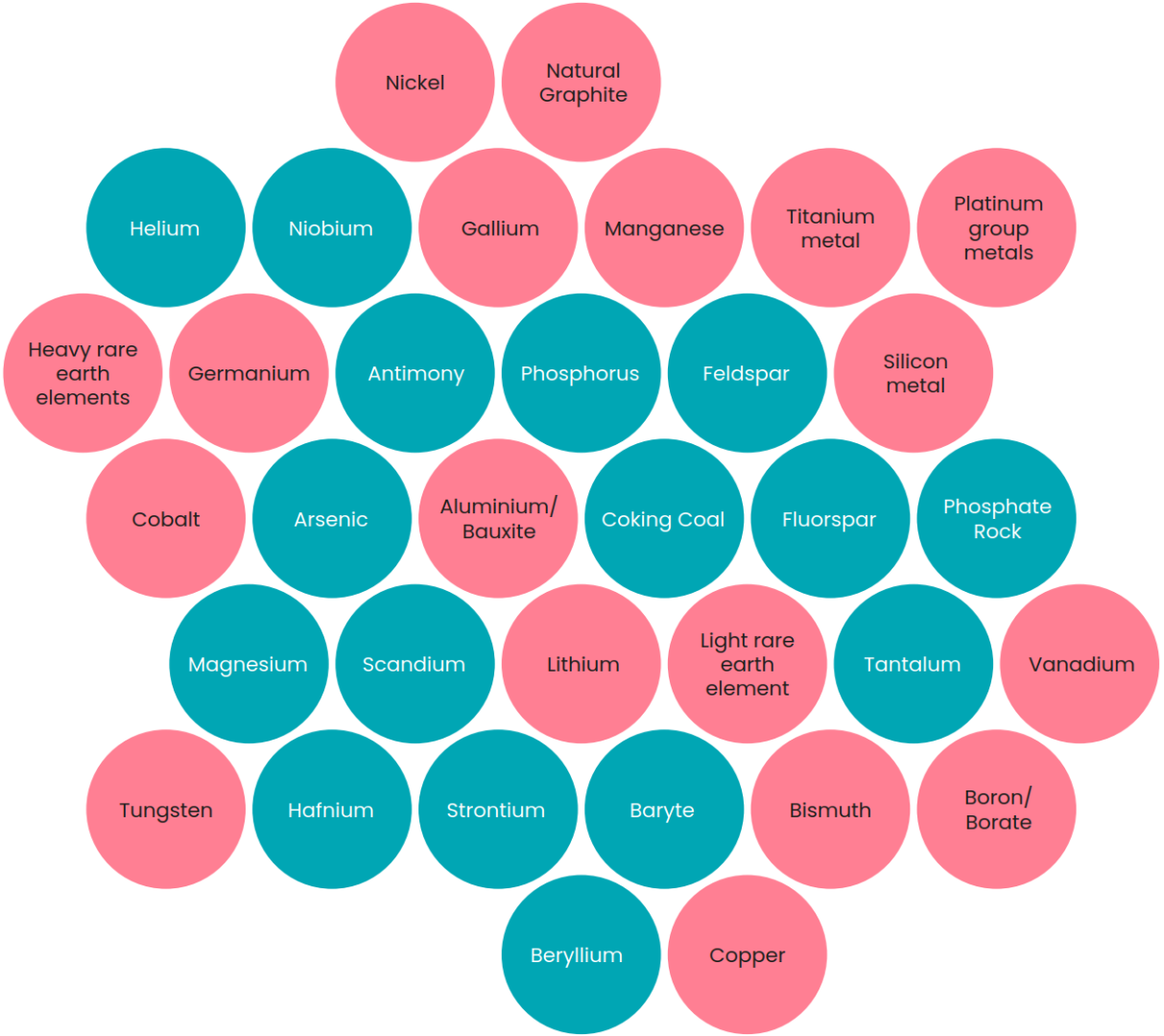The increasing significance of critical raw materials
Author: Teemu Turunen
Estimated reading time: 5 minutes
As we pivot away from fossil fuels towards cleaner energy systems, adept utilization and management of materials become increasingly important. For instance, the expansion prospects of many key technologies face constraints due to the escalating demand for critical raw materials. Concurrently, waste and by-products are emerging as noteworthy reservoirs of raw materials, underscoring their newfound significance.
As technological advancements progress, the demand for new types of raw materials continues to grow. To anticipate future needs, the European Union has launched the Raw Materials Initiative (RMI) program, designed to tackle raw material-related challenges at the EU level. As part of this initiative, a procedure for defining critical materials has been established. Criticality assessment considers various factors, with a primary focus on both the risk of supply disruption and the economic significance of the raw material.1
Watch video: Key technologies constrained by rising demand for critical raw materials
(duration: 37 seconds)
34 critical raw materials
According to the EU criteria, 17 out of the 34 identified critical raw materials have been classified as strategically important: their demand is increasing while their risk of supply disruptions is assessed as higher. The list includes common raw materials such as copper (see figure below).
It is important to note that classifying a raw material as non-critical does not mean that its availability and significance to the EU economy can be ignored. Increasing knowledge and potential developments in EU and global markets may affect the list of critical raw materials in the future.1

EU-defined critical raw materials (strategic raw materials in pink)1
17 out of the 34 identified critical raw materials have been classified as strategically important: their demand is increasing while their risk of supply disruptions is assessed as higher.
Impact of geopolitical tensions
When assessing future trends and needs, it is crucial to understand that geopolitical competition for critical raw materials is increasing. Logistics chains are global, and the EU finds itself increasingly competing for limited resources with China, the United States, and the global South.
The EU has taken notice of the situation, and in November 2023, preliminary agreement was reached on EU legislation concerning critical raw materials. It aims to achieve the following impacts1:
- Increase and diversify EU’s critical raw material supplies
- Strengthen the circular economy and recycling
- Support research and innovation on resource efficiency and development of substitute materials
- Strengthen Europe’s strategic independence
A broader EU goal by 2030 is to reduce its dependence on third countries for critical raw materials1. The objective has been concretized into four sub-goals, as presented in table.
Extraction in the EU:
At least 10% of the EU’s annual consumption comes from extraction within the EU
Processing in the EU:
At least 40% of the EU’s annual consumption comes from processing within the EU
Recycling in the EU:
At least 25% of the EU’s annual consumption comes from recycling within the EU
External Sources:
No more than 65% of each strategic raw material’s annual consumption in the EU at any relevant processing stage may be based on imports from any single third country
EU goals to reduce its dependence on third countries for critical raw materials1
How to prepare for risks associated with critical materials?
In a study conducted by Germany’s Federal Institute for Geosciences and Natural Resources (BGR) and PricewaterhouseCoopers (PwC), an analysis was conducted on how non-German companies secure their raw material supplies. The study also focused on the strategies currently employed by these companies and their intentions for future use, as well as the opportunities and challenges associated with these strategies. The following 11 raw material strategies were identified in the study3:
- Commodity price hedging
- Passing on increased raw material prices to the customer
- Storage
- Diversification of suppliers
- Long-term contracts
- Procurement groups consisting of a few companies
- Improvement of material use
- Recycling
- Material substitution
- Vertical integration
- IT solutions in decision-making
As noted above, some strategies focus on stabilizing prices or contractually preparing for uncertainties. However, it is essential to increase self-sufficiency concretely. Therefore, key strategies include improving material use, recycling, and material substitution.
It is essential to promote material recycling according to the traditional waste hierarchy. The primary goal is to maintain the product in its original form by recycling it as it is.
The many opportunities of design and recycling
A critical moment for effective material use and substitution with less critical alternatives occurs during the design phase. At this stage, it is possible to influence both the product or solution itself and its entire value chain.
It is essential to promote material recycling according to the traditional waste hierarchy. The primary goal is to maintain the product in its original form by recycling it as it is. If this is not possible, efforts should be made to recycle the components of the product. If these are not feasible, the next option is material recycling, with energy use as the very last resort.
These methods are not mutually exclusive; on the contrary, it is essential to promote industrial recycling and industrial symbioses. In this way, sufficient scale can be achieved, and operations become efficient and profitable.

Teemu Turunen
Phil. Lic.
(Env. Science)
Teemu has extensive experience in energy and process consulting in several industries. He currently works as Business Development Director in the energy and process business area. His focus is to lead the development of sustainable solutions for future needs.
teemu.turunen@elomatic.com
References
- Critical raw materials act – Consilium (europa.eu)
- Bobba, S., Carrara, S., Huisman, J. (co-lead), Mathieux, F., Pavel, C. (co-lead), European Commission, Critical materials for strategic technologies and sectors in the EU – a foresight study, 2020 DocsRoom | European Commission (europa.eu)
- German Mineral Resources Agency (DERA) and PricewaterhouseCoopers, Köster, H, et ai. 2022 Securing raw material supply: Benchmarking of measures of foreign manufacturing companies and recommendations for action
Want to know more? Check out these related articles:
Resource efficiency
Would you like to boost the resource efficiency of your operations? We design efficient production plants and processes and improve the operational efficiency of energy and materials.
Striving towards Industry 5.0 – What does the future factory look like?
Many associate industrial activities with smokestacks, water pollution, and reports of factories closing due to unprofitability. In reality, industrial operations are currently undergoing a significant transformation. Digitalization is playing an increasingly prominent role in manufacturing, and clean production technologies are becoming mainstream. Innovation, especially in the fields of bioeconomy and circular economy, is thriving as raw materials and materials are utilized across industry boundaries.
